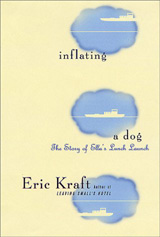
YOU CAN READ
|
Chapter 19 Morphology and Aesthetics of Clam Boats
|


eBOOK PAGE |
|
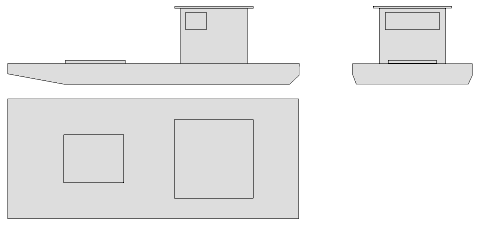
My sketch of a basic clam boat, a scow. |
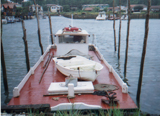
The scow is such a simple and obvious design for a clam boat that it is nearly universal; this picture of an oyster boat, which Albertine snapped last year in a settlement of shellfisherfolk along the inner edge of the Bassin díArcachon on the Atlantic coast of France, could have been taken in Babbington when I was a boy, except that the clam boats of Babbington were gray and the oyster boats of Arcachon were as colorful as my motherís little pastel sandwiches. |
||
| There is no need for a clam boat to be beautiful, yet some are. If you had visited Babbington when I was a boy, you would have seen some clam boats different from those boxy utilitarian scows, a curvaceous bunch of boats, curvy not because someone thought that curves would make them beautiful or sexy, but because they had originally been designed to sail. Arcinella was one of these. | |||
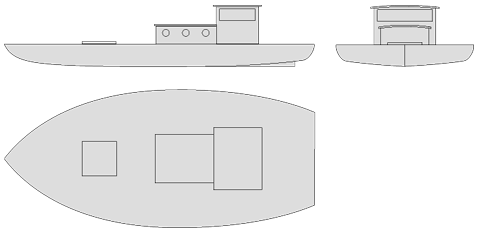
My sketch of Arcinella, from memory. |
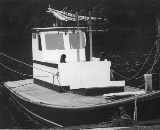
A clam boat with some of Arcinellaís attributes, photographed near Babbington. (The devices on a rack above the cabin are tongs for harvesting clams from the bay.) |
||
| If a clam boat can be said to be beautiful,
Arcinella
was a beauty, though she was no longer young. She had a past, which
we knew, or thought we knew, from Captain Mac. Long ago, she had
been under sail, a working boat, carrying goods from one town on Bolotomy
Bay to another, but when sail gave way to power, and shipping by water
gave way to shipping overland, Arcinella was abandoned, a casualty
of progress. She spent the war years in a shallow backwater of the
Bolotomy River, anonymously settling into the muck, and when Captain Macís
father found her she was well on her way to becoming a rotting hulk. He
bought her for next to nothing and transformed her from sail to power,
from shipping to clamming. He pulled her from the water, and in Leechís
Boat Yard he removed her mast and rigging, cut her keel down and rebuilt
her bottom to give her a very shallow draft so that she could float in
the shoals of the bayís clam flats without scraping her hull. He
installed a six-cylinder engine from a 1946 Studebaker Champion, driving
her prop through the first and reverse gears of the carís transmission.
According to Captain Mac, his father had undertaken the project with the
intention of selling Arcinella, but when he looked her over and
saw what he had wrought, he was struck by the beauty of her, seduced by
the beauty of her. Stripped down, without her mast and rigging, the
lines of her hull and the gentle curve of her gunwales showed to better
advantage than ever before. She was sturdy and stable, broad in the
beam, solid but graceful, a beauty. The Galatea effect kicked in.
He kept her.
|
|||



